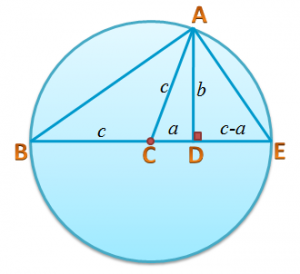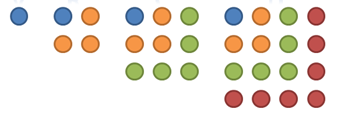In the previous math article, we have shown that there are infinitely many Pythagorean triples. In this article, we are going to discuss a very short but effective strategy in generating Pythagorean Triples.
A Pythagorean triple is the integer triple  satisfying the Pythagorean equation
satisfying the Pythagorean equation  .
.
Observe the Pythagorean triples  and
and  . We can see that the hypotenuse is greater than the longer side by
. We can see that the hypotenuse is greater than the longer side by  . From the pattern, we can form the Pythagorean triples
. From the pattern, we can form the Pythagorean triples  satisfying the equation
satisfying the equation  .
.

Right triangle with side length 3, 4 and 5 units.
Solving the equation we have  , which implies that
, which implies that  . Now,
. Now,  is always odd (can you see why?). It follows that in order for
is always odd (can you see why?). It follows that in order for  to be an integer,
to be an integer,  must be a perfect square. This means, that we are sure that
must be a perfect square. This means, that we are sure that  is an integer, if
is an integer, if  is an odd perfect square.
is an odd perfect square.
From here, we can generate infinitely many examples of Pythagorean triples. For example,  is an odd perfect square. So plugging it in the equation we have,
is an odd perfect square. So plugging it in the equation we have,  , then, we have the triple
, then, we have the triple  , another Pythagorean Triple. If we let
, another Pythagorean Triple. If we let  , then we have the triple
, then we have the triple  .
.
Now, we found another way to generate Pythagorean Triples.
Related Articles
and
and hypotenuse
, the following equation always holds:


